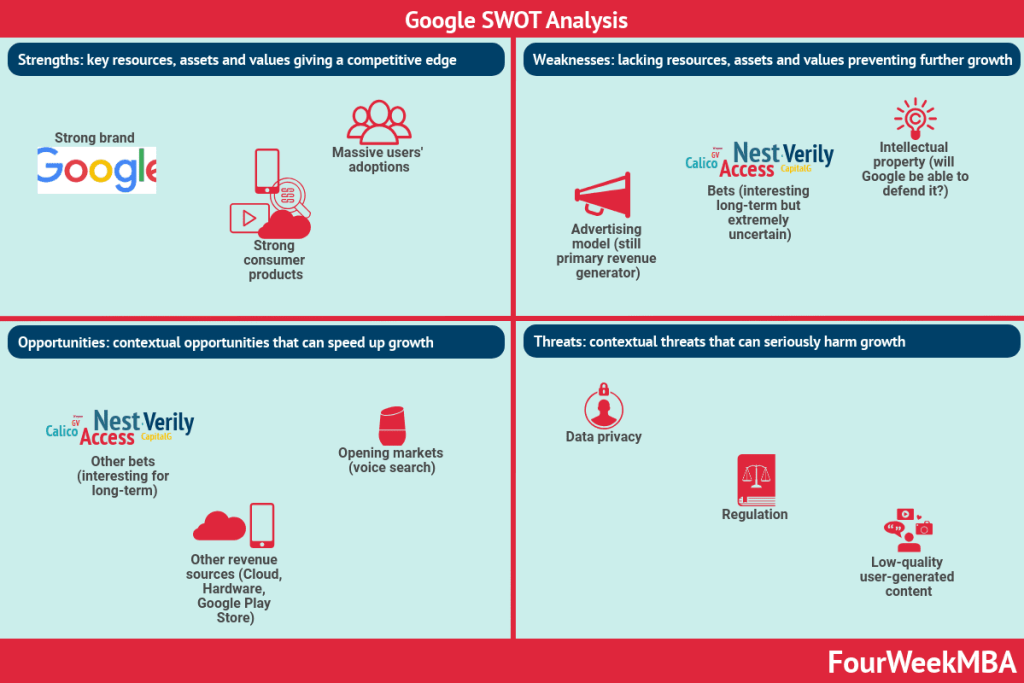Samsung was founded in South Korea in 1938 by Lee Byung-Chul. Originally a trading company, it took Samsung 22 years to become the fully-fledged electronics company that most people recognize today. Indeed, the company is a leader in technological innovation through telecommunications, electronics, and home appliances.
This SWOT analysis will detail how Samsung became such a leader and what the future may look like for this company.
Strengths
- Large, global market share – Samsung has a global TV market share of 30% and has led the market in sales for the past 14 years. Samsung also enjoys just under a quarter of the global markets for smartphones and tablets.
- Research and development – Samsung is the second-largest patent holder in the United States, submitting 5072 patents to the US Patent and Trade Office in 2015 alone. Samsung also possesses 36 R&D centers around the world which allows it to be an innovator and leader in consumer electronics.
- Brand value – Forbes rated Samsung as the 10th most valuable brand in the world. High brand value is positively correlated with consumer loyalty and is important for the long-term growth of a company.
Weaknesses
- Dependence – since Samsung has not developed an operating system of their own, they are dependent on the Google-owned Android. This impacts on consumer loyalty as many who are loyal to Apple operating systems will not buy from Samsung. Samsung is also heavily dependent on the North American market for revenue in general.
- Product safety issues – Samsung has experienced several safety issues with their products. For example, the Galaxy Note 7 suffered from overheated batteries which exploded in some instances. Samsung washing machines and refrigerators have also been recalled in recent years for starting fires.
- Shrinking market share – with the proliferation of cheaper smartphones manufactured by Huawei, Samsung has lost valuable market share in emerging economies such as China where the potential for expansion was high.
Opportunities
- Expansion – Samsung has a strong presence in India, one of the least penetrated smartphone markets in Asia. Provided that the company creates a product that is suitably priced, there is an opportunity for growth and expansion. Samsung is also a market leader in South Africa which is also experiencing a surge in demand.
- Processor demand – since there is a growing demand for smartphone and tablet processors, Samsung is well placed to meet this demand as one of the key manufacturers of processor technology. In fact, the tablet market is predicted to grow in double digits over the next few years.
- Digital marketing focus – although Samsung is a globally recognized brand, it does not have the brand equity or popular culture history of competitor Apple. Concerted efforts toward digital and social media marketing, particularly in North America, could help the brand immensely with driving consumer engagement and increased revenue.
Threats
- Android operating system – irrespective of the quality of Samsung products, their Android operating systems are not as popular among average users as iOS. There is a threat that tying devices to Android might have long term negative implications for Samsung.
- Competition – rival Apple represents the biggest threat to Samsung’s market share. Apple successfully filed a lawsuit against Samsung after the company was ruled to have blatantly copied the design of the iPhone. There is also the possibility that Apple starts manufacturing televisions and other home electronics in a market that Samsung has traditionally dominated.
- Coronavirus – with the global pandemic heavily impacting Samsung’s biggest market in the United States and also their global supply chains, sales and revenue could take a large hit in the second half of 2020.
SWOT Analysis Case Studies


















Read Next: SWOT Analysis, Personal SWOT Analysis.
Other case studies:
- Amazon SWOT Analysis Example
- Apple SWOT Analysis Example
- Facebook SWOT Analysis Example
- Google SWOT Analysis Example
- Netflix SWOT Analysis Example
- Starbucks SWOT Analysis Example
- Tesla SWOT Analysis Example
Other resources:









